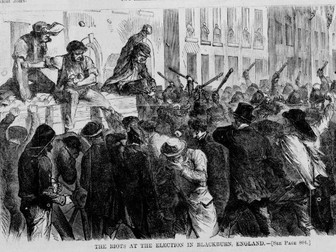
Understanding British Democracy (Interactive Map)
By contrasting 19th-century electoral practices using an interactive map of violent events with today’s elections, pupils develop a deeper understanding of British democratization and a critical appreciation of democracy as a fundamental British value. The research-based teaching resources, fitting KS 3 history and KS 3/4 citizenship/SMSC curriculum, highlight that democratization involves not just universal suffrage, but also the establishment and respect of political rights that enable elections to serve as instruments of democracy.
The resource is based on an ESRC/AHRC-funded research project competed at Durham University’s School of Government and International Affairs and consists of 5 lessons, complete with detailed teacher notes, Powerpoint slides, and worksheets. Lesson 1 develops pupils understanding of the key terminology used and gives pupils an idea of what nineteenth century elections were like. Lesson 2 examines the causes of Election violence in the 19th-century and uses this to uncover the problems with both 19th-century elections and democracy. This lesson involves the use of an online interactive map, which allows pupils to explore violent events in their region and identify potential causes. Lesson 3 focuses on the impact that electoral reforms had on election violence prior to the First World War. Finally, lesson 4 (citizenship focus) and lesson 5 (history focus) round of the lessons by focusing on the citizenship or history aspect of the topic. The citizenship lesson looks at the state of democracy in the world and the UK today and involves pupils researching and developing a campaign to encourage more young people to vote in the UK today. The history lesson involves pupils researching an (local) election violence incident on from the interactive map in more depth using the primary newspaper sources cited.
